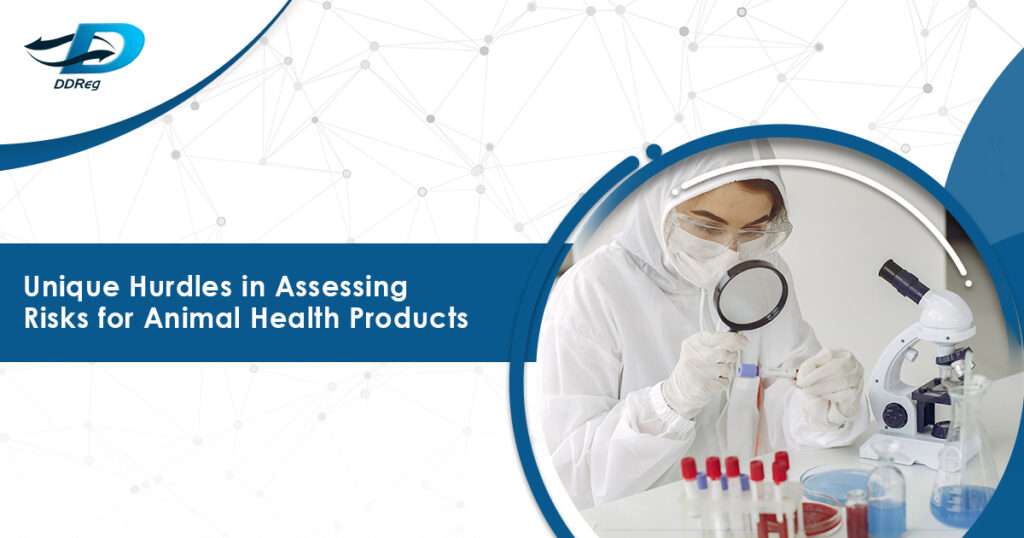
The development of veterinary medicines faces numerous challenges that are unique compared to human pharmaceutical development. Although the pharmaceutical industry in both sectors is built on shared principles of safety and efficacy, the veterinary pharmaceutical industry is confronted with a significantly more complex risk environment. The distinctive risk assessment challenges of veterinary pharmaceuticals and how industry leaders are addressing them are explored in this blog.
Species Diversity: The Multispecies Challenge
One of the most basic differences in veterinary risk assessment is that safety must be assessed in more than one species. Unlike human pharmaceuticals, which are typically developed to operate within the confines of a single species, Veterinary drug developers must establish safety profiles across a wide range of species.
Designing a drug to be safe for dogs, cats, horses, and cattle all at once is like developing a drug that works safely for species as physiologically distinct as cats, cattle, and poultry. Pharmacokinetic profiles may vary significantly between species, necessitating species-specific dosing and safety evaluations. Likewise, dosage calculations become exponentially more challenging when treating an animal that can vary in weight from a small cat to a horse. These include notably different rates of metabolism, organ functions, and natural detoxification processes between species, making toxicity assessments difficult.
The Environmental Impact Factor
Unlike human pharmaceuticals, veterinary drugs tend to enter the environment in large amounts via animal waste. For example, excretion of certain pharmaceutical compounds from medicated livestock and other farm animals can lead to their release into soil and water, with potential ecological consequences.
Environmental risk assessment is now essential to the veterinary drug approval process in most regulatory frameworks. This includes evaluating:
- Effects on soil microorganisms
- Impact on non-target organisms
- Bioaccumulation potential in ecological systems
- Development of antimicrobial resistance in the environment
Connection to the Human Food Chain
Risk assessment for livestock medications assesses risk not only to the animals treated but also to the human consumers of livestock products. Regulatory agencies have to set acceptable withdrawal times — the interval between the last administration of a drug and when an animal or animal-derived product can enter the food chain.
Withdrawal periods must be established using pharmacokinetic modeling and making sure that the resulting residues are below the safe levels. The science behind such determinations is complex and is evolving as analytical techniques become more sensitive.
The veterinary pharmaceutical sector is still developing approaches to risk assessment to address these challenges. Emerging approaches include:
- Advanced modeling techniques to extrapolate safety data across species
- Advanced residue detection technologies, such as LC-MS/MS, allow for precise quantification of trace drug residues in meat and milk.”
- Integration of epidemiological and real-world data to complement controlled studies
The industry increasingly recognizes that effective risk management extends beyond regulatory approval to encompass the entire product lifecycle. This ecosystem approach consists of strong pharmacovigilance systems to monitor emerging safety signals and environmental monitoring programs to assess unforeseen ecological effects.
Conclusion
Risk assessment for veterinary pharmaceuticals is a challenging problem, where risk for many species, environmental effects, food safety, and economic constraints must be considered simultaneously. These assessment processes will continue to evolve with advances in the understanding of comparative physiology, environmental toxicology, and antimicrobial resistance. The challenges are significant but addressing them is a necessary step to ensure safe and effective treatments to benefit animal health without harming human health and the environment.
As the regulatory landscape continues to evolve, having the right partner is crucial. DDReg supports clients with end-to-end regulatory and pharmacovigilance services, including submissions for NDA, ANDA, and biosimilars. Connect with our experts for tailored guidance in veterinary pharmaceutical regulations.
DDReg has provided its customers with regulatory and pharmacovigilance services in facilitating the submission of applications, including NDA, ANDA, biosimilars, and more. Reach out to DDReg for expert and tailored guidance on your application. Read more from our expert here: Navigating Challenges and Future Opportunities in Veterinary Regulations
